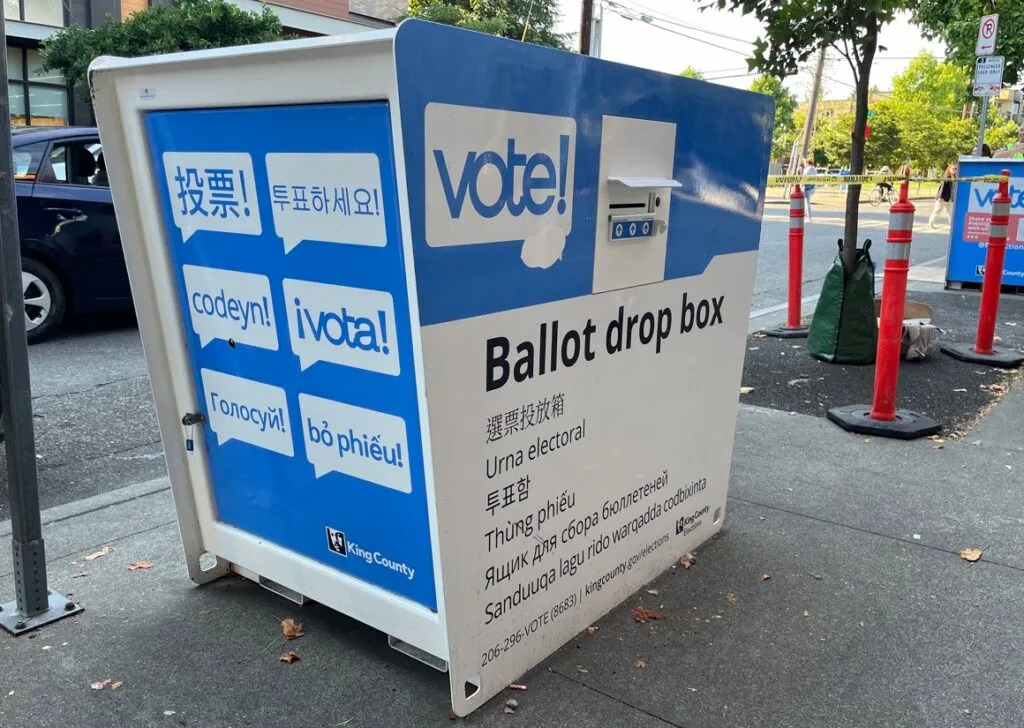
(Stock photo by Sirisak Boakaew/ Getty Images)
Maine isn’t in a position to meet the electricity demand that is forecasted to more than double by 2050, so the state is looking at how to better support the development of large-scale clean energy projects.
In 2024, the Governor’s Energy Office commissioned a report detailing the capital investments needed to expand clean energy infrastructure and the existing efforts from the state. The report also looked at the potential risks to such investments and what state and federal programs could mitigate those. This information was gathered through the lens of trying to meet the state’s goal of 100% clean electricity by 2040, which was recently enshrined into Maine law.
The study behind the report was completed before President Donald Trump signed the federal budget reconciliation bill that phases out clean energy tax credits while making it cheaper to drill and mine for fossil fuels on federal land. The state energy office said it is too early to understand the full impact of that law on the clean energy financing landscape, but it is expected to slow the transition to renewable energy and create “significant uncertainty within Maine’s burgeoning clean energy economy.”
However, the report from the GEO is still useful for understanding Maine-specific challenges, potential solutions and other factors that could make large clean energy projects successful in the state.
The report found that projects costing $5 million or more that are directly connected to the energy grid — such as onshore wind farms, hydropower facilities or utility-scale solar — will be critical to meet the state’s goals and reduce price volatility for ratepayers. The public can download a draft copy of the findings and provide feedback to the Governor’s Energy Office by August 8.
“Maine is at a pivotal moment in its clean energy transition,” the report says.
By 2040, Maine will need roughly 24,000 gigawatt hours of energy per year to meet the state’s power demand, and the report said the state is well-positioned to expand clean energy production thanks to its significant offshore wind potential and existing renewable resources like hydropower, onshore wind and solar. Currently, the state uses about 12,000 gigawatt hours of electricity annually.
SUBSCRIBE: GET THE MORNING HEADLINES DELIVERED TO YOUR INBOX
The report also outlines the barriers Maine faces to building out clean energy projects and recommendations for how to overcome those.
While there is federal uncertainty and roadblocks to developing more clean energy infrastructure under the Trump administration, including a pause on new wind permits, there are also a number of Maine-specific risks to investing in renewable energy in the state.
Some of these challenges are beyond the scope of policy, such as Maine’s rural geography and limited construction season due to its short summers and harsh winters.
There’s also the challenge of filling the construction jobs these clean energy projects require since Maine already has a workforce shortage, like many other parts of the country, worsened by an aging population. To build a 100 megawatt solar project, for example, would create about 1,100 construction jobs, whereas constructing a similar size wind farm requires about 400 workers, the report says.
However, there are some barriers that have the potential to be overcome by policy changes. For example, Maine takes a home rule approach, leaving many decisions around land use, permitting and taxation up to local municipalities. That local control structure may provide flexibility for a town’s individual needs, but it also means there isn’t a centralized permitting process for clean energy projects.
This means whether a community supports a clean energy project can help to stall or fast-track the process, the report says.
Additionally, large-scale projects need to work with the regional grid to assess the impact of connecting the new resources. ISO-New England, which operates the grid, has historically had a cumbersome process for these assessments; however, there have been recent efforts to streamline the process and make it more cost-effective. Since parts of the grid have relatively low interconnection volume, they can require cost-intensive upgrades that can make it difficult to bring new projects online.
Clean energy projects also come with high upfront costs and rely heavily on debt financing — securing debt against the project’s assets and cash flows — to fund the construction. That’s why state incentives and other mechanisms such as renewable energy credits are vital for creating favorable conditions for large-scale projects.
The report outlines a handful of programs the state can turn to to financially support large clean energy projects. While there are benefits to using these funding mechanisms — such as creating new jobs and enhancing energy affordability — a significant portion of their resources have already been allocated.
For example, the Maine Technology Institute, which was founded by the Maine Legislature to provide grants, loans, and other investments to foster the state’s innovation economy, allocated $8 million to support certain electric grid upgrades. As of 2024, $6.5 million of that had been disbursed. A footnote in the energy office report also says that the program was active when it initiated the study, but as of this month, it has been moved to the “Completed Programs” page on the organization’s website and may no longer be available. The website also notes that the grants had to be used by March 2026.
After reviewing the risks and barriers associated with clean energy projects, the report also outlines a set of solutions to overcome those challenges. Some of those suggestions are aimed at supporting local communities and developers through technical assistance and state policies. Others want to streamline the procurement process and expedite project timelines to better incentivize the private sector and foster more competition among developers.
For example, it suggests modifying the request for proposal (RFP) process for renewable energy projects through the Maine Legislature to allow for more timely procurements and minimize the potential of a project failing.
To submit comments on the draft report, people can email [email protected] with the subject “Financing Study” by 5pm on August 8.








Comments